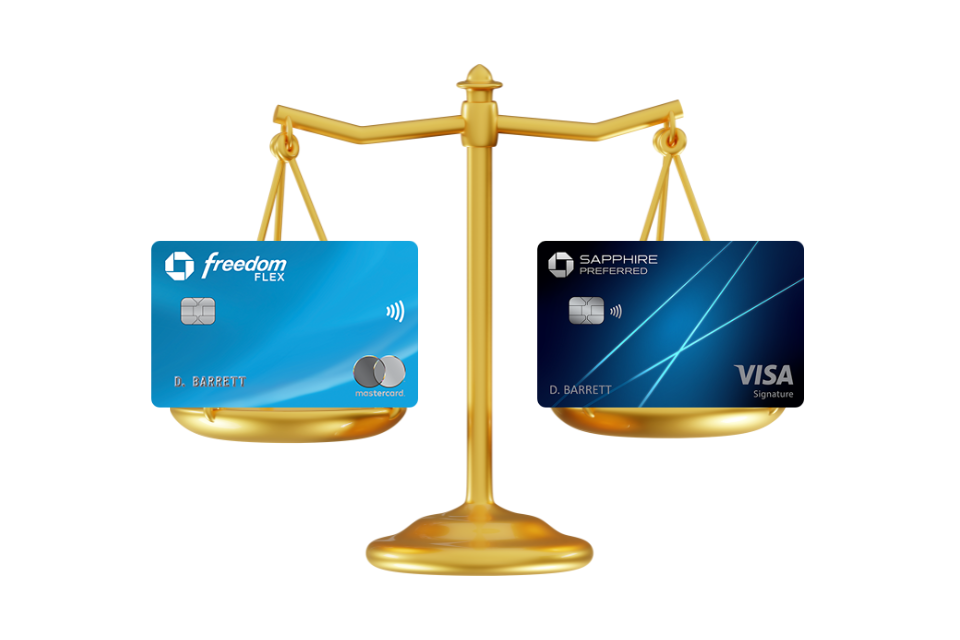The Chase Freedom Flex® and Chase Sapphire Preferred® Card serve as top choices for individuals seeking cash-back and travel rewards, respectively. While both cards allow you to earn Ultimate Rewards points, they cater to different financial situations and consumer needs. Understanding these differences is essential in selecting the ideal credit card. In certain cases, holding both cards may be advantageous, as it enables cardholders to maximize rewards across various spending categories. To ensure informed decision-making, prospective applicants should explore the distinct features and offerings of each card.
The Chase Freedom Flex is particularly appealing due to its zero annual fee, lucrative cash-back potential, and added benefits like travel and purchase protections alongside an introductory 0% APR rate. The absence of an annual fee makes it an attractive option for those looking to avoid additional costs while reaping the rewards of a cash-back credit card. Conversely, the Chase Sapphire Preferred has an annual fee of $95, but it offers enough value that many users can comfortably offset this expense through its rewards and features. However, for cost-conscious consumers, the annual fee could be a determining factor in their choice between the two cards.
An outstanding offering from the Chase Sapphire Preferred is its two-part welcome bonus: new users can earn 60,000 bonus points after spending $4,000 within the first three months, plus $300 in statement credits for Chase Travel purchases made in the first year. This bonus can amount to a substantial $1,050 when redeemed for travel, making it highly beneficial for frequent travelers. The Chase Freedom Flex, by comparison, provides a more modest welcome offer of $200 cash back after spending $500 in the first three months, catering to those with lower budgets or infrequent travelers.
In terms of earning rewards, the Chase Sapphire Preferred delivers strong returns in prevalent spending categories, such as dining and travel, particularly when booked through the Chase portal due to a 25% enhancement in the points’ value. Furthermore, cardholders can transfer points to numerous airline and hotel partners for added flexibility. In contrast, the Freedom Flex uses a rotating category approach, providing 5% cash back in specific categories each quarter but capping the rewards at $1,500 spend per quarter. While both cards allow for point redemptions, the Sapphire Preferred provides more versatility, especially for those focusing on travel.
Both cards emphasize travel and purchase protection, although the Sapphire Preferred offers more extensive coverage. For example, it includes primary rental car insurance while the Freedom Flex offers secondary coverage. Furthermore, the Sapphire Preferred has valuable perks, such as an annual $50 statement credit for hotel reservations through Chase Travel and a 10% anniversary bonus based on the previous year’s spending. These features make the Sapphire Preferred more suited for avid travelers seeking to maximize their rewards while enjoying comprehensive benefits and protections.
In conclusion, the Chase Freedom Flex and Chase Sapphire Preferred cards each have unique advantages tailored to different consumer needs. Consumers who prioritize cash back and want to avoid an annual fee may find the Freedom Flex more suitable, particularly for managing larger purchases or debt through its 0% APR introductory offer. Conversely, if frequent travel and reward maximization through flexible point redemption are important, the Sapphire Preferred could be the better choice. Ultimately, combining both cards could provide the optimal balance, leveraging the cash-back potential of the Freedom Flex with the travel rewards and perks associated with the Sapphire Preferred. Understanding your financial habits and goals will guide you in making the most informed choice.

